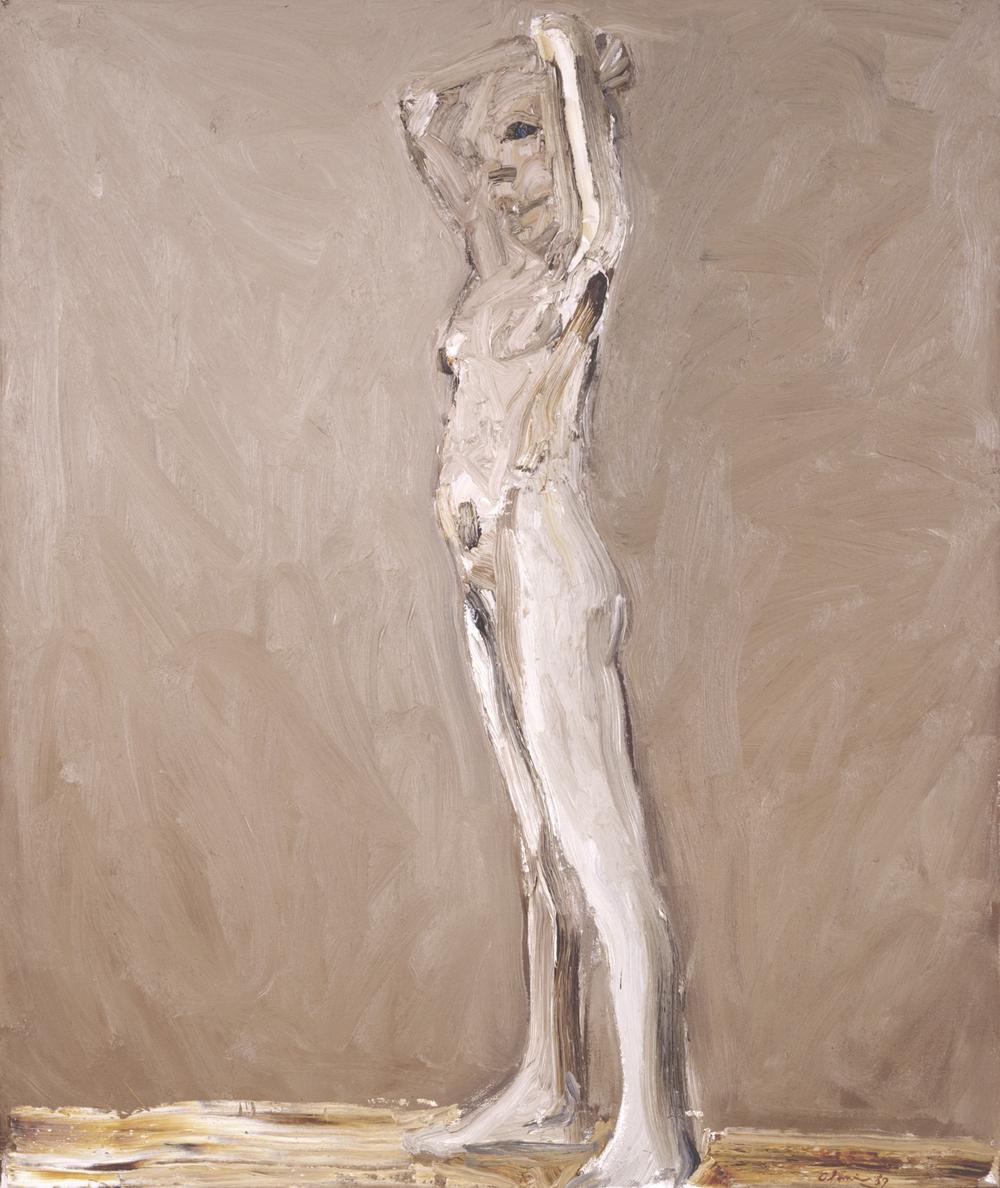Nathan Oliveira. Painting the Figure
During the heyday of Abstract Expressionism in the Bay Area, Nathan Oliveira was studying figure painting. It was 1950, and he was taking a summer course with German expressionist Max Beckmann at Mills College in Oakland. Beckmann was hugely influential on the young artist, who would recall his teacher’s primary advice: “more black.”1 Uninterested in current trends, “Beckmann symbolized the old world” and encouraged Oliveira to “deal with reality.”2 He was most enthusiastic about Oliveira’s work during class sessions with models, encouraging the development of isolated figures in atmospheric washes of paint.3 By the time Oliveira joined the painting faculty at California School of Fine Arts (now San Francisco Institute of Art) in 1956, along with Frank Lobdell and Richard Diebenkorn, Abstract Expressionism had fallen out of favor: “It was like the aftermath of a great party . . . and we all had to clean up.”4 There, amid “a spirit of resurrection,”5 Oliveira forged his own style bridging traditional figure painting with the primacy of the artist’s gesture.
Nathan Oliveira, in Peter Selz, Nathan Oliveira (Berkeley: University of California Press, 2002), 20. See also Caroline A. Jones, Bay Area Figurative Art, 1950–1965 (Berkeley: University of California Press, 1990), 101. ↩︎
Nathan Oliveira, in Peter Selz, Nathan Oliveira (Berkeley: University of California Press, 2002), 21 and 20. ↩︎
Caroline A. Jones, Bay Area Figurative Art, 1950–1965 (Berkeley: University of California Press, 1990), 101. ↩︎
Caroline A. Jones, Bay Area Figurative Art, 1950–1965 (Berkeley: University of California Press, 1990), 102. ↩︎
Caroline A. Jones, Bay Area Figurative Art, 1950–1965 (Berkeley: University of California Press, 1990), 102. ↩︎
